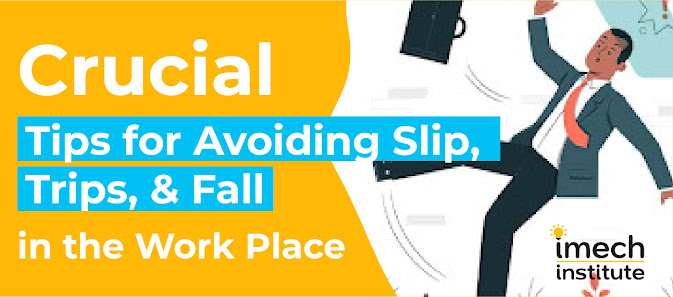Few people can say that they have never tripped, slipped, or fallen in their life. It happens to everyone, at home, at school, at work, at play. While it may make people laugh, the reality is that these types of accidents are dangerous, especially when they occur in the workplace.
What are the most common reasons for trips, trips and falls?
Slips, trips, and falls can be caused by a variety of hazards and circumstances. Slips and falls at work are most often caused by loss of traction due to wet floors, ice, or snow. Sidewalk obstructions are a major source of tripping hazards. Falls can be caused by tripping, slipping, and lack of safety equipment on stairs and upper floors in addition to these two events. The majority of low-altitude drops are from ladders.
How to Avoid Tripping, Slipping, and Falling at Work:
There are many reasons why you might be prone to tripping, stuttering, and falling at work. However, it's fairly easy to employ techniques that prevent slips, trips, and falls. Here's how to avoid tripping and falling at work.
1. Wear shoes that fit your body.
Resize wet floor signs as well as floor markers. Warning signs can be used to visually warn employees of potential trip, slip and fall hazards. Wet floor signs should be installed at all workstations to indicate recently mopped wet areas, leaking equipment, or moisture from the outside. Other warning signs such as 'Watch your step' or 'Bumpy ground' can be used to alert staff.
2. Do not work in the dark:
Make sure there is enough light to work. Proper lighting can help avoid tripping and other slip hazards.
3. Clean up spills before they become a slip hazard.
Pick up items that have fallen off the floor and wipe up spills quickly to prevent slips and trips. Wet floor signs should be installed at all workstations to indicate recently mopped wet areas, leaking equipment, or moisture from the outside. Other warning signs such as 'Watch your step' or 'Bumpy ground' can be used to alert staff.
4. Use Warning Signs to Identify Trip Hazards
Wet Floor Resize Signs Similar to floor markings, warning signs are used to identify potential trip, slip and fall hazards to employees. can be visually alerted to Wet floor signs that should be installed at all workstations to indicate recently mopped wet areas, leaking equipment, or moisture from the outside. Other warning signs such as 'Watch your step' or 'Bumpy ground' can be used to alert staff.
5. Ensure that the stairs have proper handrails.
All workplace stairs, even short ones, must be fitted with suitable handrails. Encouraging the use of handrails is the easiest way to prevent falls from stairs.
6. Use of fall arrest equipment
Appropriate and approved fall arrest equipment must be used when working at heights or low levels where serious injury may occur. . Handrails, railings, harnesses, and lifelines are all part of infrastructure and fall arrest equipment.
Why Imechinstitute?
Imechinstitute is a leading provider of Health and safety training and consulting offering a wide range of global health and safety courses in virtual and live training. We are internationally recognized as a premier service provider in all areas of consulting.
We protect what matters most to our customers with innovative, reliable and compliant solutions. Imech provides other services such as consulting services, and QAQC Course Like: cswip3.1, and NDT Training, QAQC Mechanical , API 510 Course . other courses
The industry generally prefers trained security professionals. Our qualified professionals support clients in gaining in-depth knowledge of how to manage workplace health and safety issues.





0 Comments